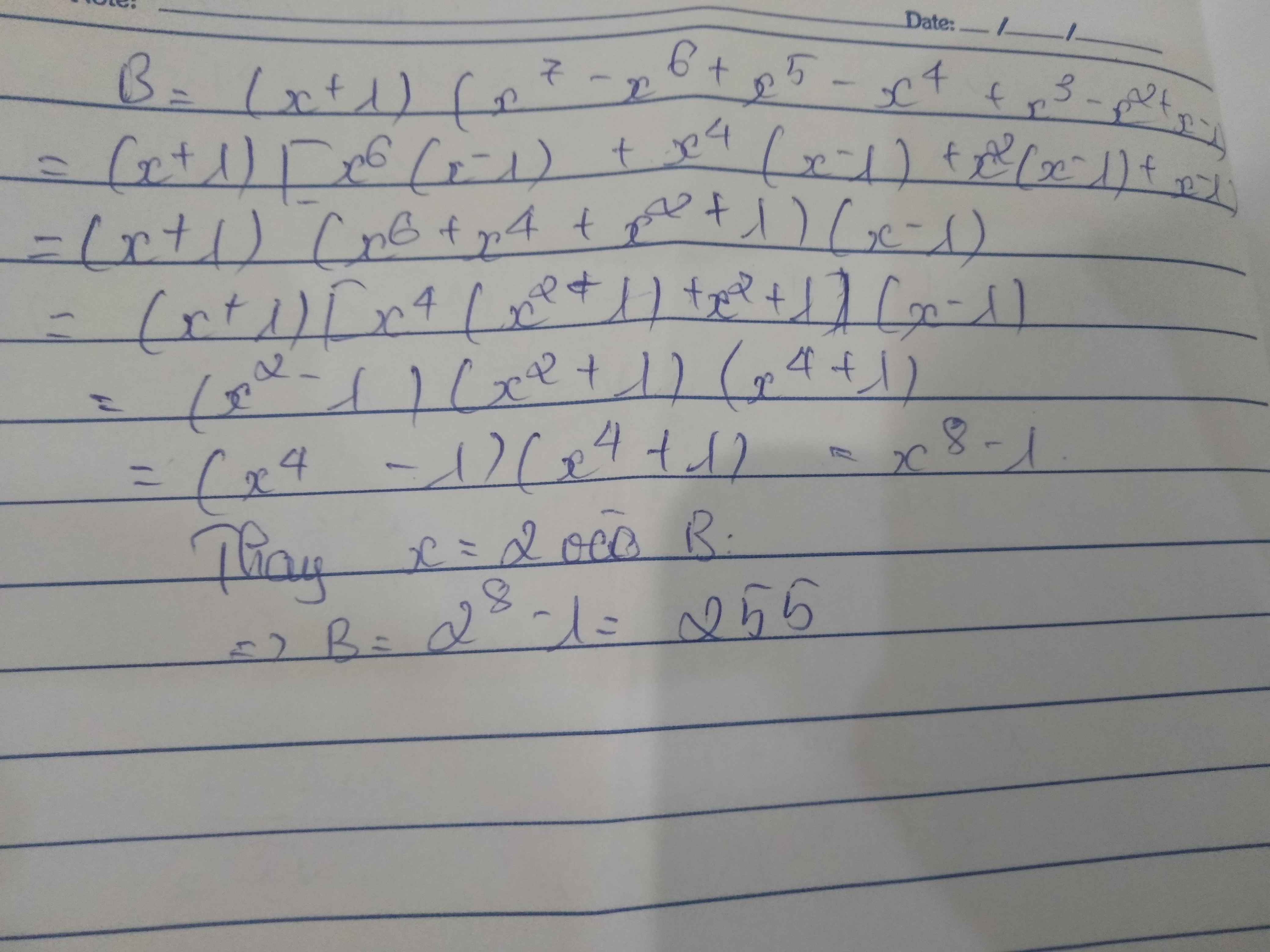Chứng minh rằng:x8-x7+x5-x3+1>0 với mọi x thuộc R
Hãy nhập câu hỏi của bạn vào đây, nếu là tài khoản VIP, bạn sẽ được ưu tiên trả lời.


2KClO3--->2KCl+3O2
.. .. .. .. .. ..
O2+ S --->SO2
.. .. .. .. .. .. ..
3O2+2H2S->2SO2+2H2O
.. .. .. .. .. ..
O2+2H2--->2H2O
.. .. .. .. .. ..
O2+2SO2--->2SO3
.. .. .. .. .. ..
SO3+H2O--->H2SO4
NHA..

x^2-x+1>0
<=>x2-2x.1/2+1/4+3/4>0
<=>(x-1/2)2+3/4 >0 ( luôn đúng với mọi x vì (x-1/2)2\(\ge\)0 với mọi x)
vậy x^2-x+1>0 với mọi x thuộc R
Mọi người giúp với
Tìm x
x^2+5x=0
Chứng minh x^2-2x+3>0 với mọi số thực x
Đường trung bình của một tam là đoạn thẳng nối 2 trung điểm hai cạnh của tam giác.Cho tam giác ABC có I là trung điểm của cạnh AB.Qua I kẻ đường thẳng a // với cạnh BC cắt AC tại K
a) Chứng minh IK là đường trung bình của tam giác ABC
b) Tính độ dài IK với BC=12cm
c) Qua K kẻ đường thẳng b // với AB cắt BC tại L . Chứng minh rằng tứ giác BLKL là hình bình hành

a) \(A=x^2-2x+2=\left(x-1\right)^2+1>0\forall x\inℝ\)
b) \(x-x^2-3=-\left(x^2-x+3\right)\)
\(=-\left(x^2-x+\frac{1}{4}+\frac{11}{4}\right)\)
\(=-\left[\left(x-\frac{1}{2}\right)^2+\frac{11}{4}\right]\)
\(=-\left[\left(x-\frac{1}{2}\right)^2\right]-\frac{11}{4}\le\frac{-11}{4}< 0\forall x\inℝ\)

a)\(x^2+2xy+1+y^2=\left(x+y\right)^2+1\)
Vì \(\left(x+y\right)^2\ge0\)với mọi \(x,y\in\)
nên \(\left(x+y\right)^2+1>0\)với mọi \(x,y\in R\)
Vậy biểu thức \(x^2+2xy+y^2+1>0\left(x;y\in R\right)\)
b) \(-x^2+x-1=-\left(x^2-2x.\frac{1}{2}+\left(\frac{1}{2}\right)^2+\frac{3}{4}\right)=-\left[\left(x-\frac{1}{2}\right)^2+\frac{3}{4}\right]=-\left(x-\frac{1}{2}\right)^2-\frac{3}{4}\)
Vì \(\left(x-\frac{1}{2}\right)^2\ge0\left(x\in R\right)\)
nên \(-\left(x-\frac{1}{2}\right)^2\le0\left(x\in R\right)\)
do đó \(-\left(x-\frac{1}{2}\right)^2-\frac{3}{4}< 0\left(x\in R\right)\)
Vậy biểu thức \(x-x^2-1< 0\left(x\in R\right)\)

Ta có: x=2
nên x-1=1
Ta có: \(B=\left(x+1\right)\left(x^7-x^6+x^5-x^4+x^3-x^2+x-1\right)\)
\(=\left(x+1\right)\left[x^6\left(x-1\right)+x^4\left(x-1\right)+x^2\left(x-1\right)+\left(x-1\right)\right]\)
\(=\left(x+1\right)\left(x^6+x^4+x^2+1\right)\)
\(=\left(x+1\right)\left(x+1\right)\left(x^4+1\right)\)
\(=\left(2^4+1\right)\left(2+1\right)^2=17\cdot9=153\)
